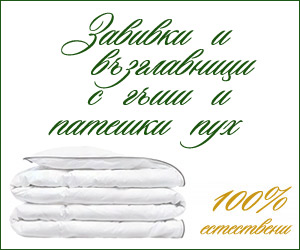ELSA SCHIAPARELLI - aesthetics of eccentricity
Who is Elsa Schiaparelli? Why do fashion experts mention her name with special respect up to this day? Is her contribution to fashion for its privileging and emancipation as art of so great importance? Her life is full of events and is worth fictionalizing and filming. Unlike Coco Chanel, Elsa Schiaparelli lived in luxury since her childhood. She was born in 1890 in Rome and passed away in 1973 in Paris. Her formation and development as one of the geniuses in the world of fashion is due to her artistic education (in her teen years she studied paintings, sculpture, fine arts, literature), as well as to the environment she lived in. Married to a lecturer-theosophist (for a very short period of time) she herself got engaged in public events and read her interesting and original lectures. Living in Boston and New York and later in Paris, of English education, she has her place in fashion due to her numerous fashion inventions and is recognized as one of the greatest innovators of clothes’ design.


 SWEATERS WERE AT THE BEGINNING
SWEATERS WERE AT THE BEGINNING
Are Elsa Schiaparelli’s merits regarding fashion and fashion design too many? Authors and analysts have tried to summarize the aspects, in which she is an innovator. Here are some assertions: Schiaparelli was the first to use surrealistic elements in her works, she was the first to name her collections; she used zips instead of buttons, she promoted the phosphorescent clasps. The designer was a true pioneer in the use of tweed as basic material parallel to the use of unusual materials like oilskin and sackcloth. She launched the moments of play in fashion, borrowing techniques and manners, effects and tricks from the circus, theatre and ballet. She worked with weird and strange colours, she imposed herself as the first designer of the so-called “fantasy fashion” and of clothing with an accent on the "shocking pink colour".
Sweaters are at the beginning (here we can look for a connection to the debut of Mademoiselle Chanel), and quickly attracted the attention of traders and entrepreneurs at the end of the 1920s. Legends are told how Elsa Schiaparelli had redrawn the sweater of a village woman she had seen at the market and later knitted it herself decorating it with a white bow. The effect from her appearance in the society had been astonishing and she opened her first shop named Pour le Sport very soon. It was specialized for sale of sportswear for various sports such as water sports, golf, tennis and skating.
 PHILOSOPHY AND INTELLECTUAL FERMENT
PHILOSOPHY AND INTELLECTUAL FERMENT
New and new ideas appeared in the works and the art of Elsa Schiaparelli just like a volcano. What inspired her? This was mostly her philosophical and intellectual attitude or if otherwise said that was her authentic aesthetics of eccentricity. From the very beginning of her activity, the designer dressed people who were in the centre of the public interest and those were duchesses, actresses, dancers, among which Greta Garbo and Marlene Dietrich, the Princess of Windsor, Gloria Swanson, Norma Shearer and others. The conceptual approach of Schiaparelli resulted from her interest and love for literature and theatre, cinema and circus, from where she got ideas, inspiration and "energy resources" for her imagination. She was very strongly influenced by the art of African people and cubism, and surrealism would affect her collections in an original and impressive way for a long time.
The philosophy of the designer supposed a large-scale synthesis between fashion and the rest of the arts and nature as a whole. It is sufficient to become acquainted with the thematic variety of her collections in the second half of the 1930s in order to understand the intellectual and cultural implied meaning in the works of Schiaparelli. In a respecting work about evening gowns we read the following about the jackets made by her: “The jacket and the embroidered bolero as part of the dinner suit attract the curiosity of the public with any collection as they subject particular themes: The Butterflies (the summer of 1937), The Circus (the summer of 1938), The Spring of Botticelli (the autumn of 1939), Space (winter 1938-1939), Commedia dell’arte (the spring of 1939) and others. These different themes provoke the fantasy of designers in the field of embroidery, in the work of the designers and the producers of accessories.”
SURREALISM IN SCHIAPARELLI STYLE
Cultural and artistic circles in which the designer found herself were for sure the centre of the aesthetical changes in the 1930s. The surrealists Salvador Dali, Luis Bunuel, Louis Aragon, Paul Eluard, Marcel Duchamp, Rene Magritte, Jean Cocteau among others take an emblematic place among them. A very special place is occupied by Pablo Picasso (in the way, for example, he was creating pictures of newspapers, she was placing newspaper prints on the dresses she was designing).


Surrealism not only inspired and motivated Elsa Schiaparelli for new forms and constructive decisions but offered innovations regarding materials. She ordered fabrics of patterns designed by Salvador Dali himself with readiness. They were good friends and implemented a number of joint projects related to fabrics and in the field of cinema and fashion accessories. Widely discussed was their joint work The Tears Dress as well as the picture of a huge lobster made by Salvador Dali that she used for a dress. The release of the subconscious, of the aesthetic deformation, the extreme provocation of a creator, the optical effects and raising the paradox into a cult, all these and a number of many other attributes of the surrealistic art intoxicated Elsa Schiaparelli and played the role of a peculiar narcotic for her energy and creativity of a designer. At different places of his biography, Salvador Dali commented on his collaboration with Elsa Schiaparelli discovering the connection between his own 1900 morphology and the kind of hair dresses introduced by Schiaparelli that in his words were “terribly impractical as the hair was placed high up in the back of the head” or saying that he and Elsa Schiaparelli managed to anticipate or embody the Second World War through their art. He even made an analogy between their joint fashion projects and the Nazi uniform of the German Army.

* * *
The art of Elsa Schiaparelli should be studied even more thoroughly as she is among the few world designers of the 20th century who ardently interpret fashion as style, aesthetics and culture of equal standing with the other arts activities. Her brilliant spirit of innovation and experiment result in many novelties in the fashion design that are widely in use even at present. Her perfume Shocking is currently an object of inspiration and a stimulus for the modern art of fragrances and bottle design. During this period of time between the end of the 1920s when she opened her first boutique in Vandom square in Paris and the last presentation of a collection of hers in 1954, she worked energetically and with inspiration, emancipating fashion as art that is worth respect in the direction of her creative apotheosis.



References:
Дали, С. Тайният живот на Салвадор Дали. Автобиография. Petrikov Publishers. С., 1996; Ермилова, Д.Ю. История домов моды, “Академия”.Москва, 2003; О`Хара, Дж. Енциклопедия на модата. “Библиотека 48 “, С., 1995; Constantino, M. Fashions of a decade. The 1930s. B.T. Batsford – London, 1991; Loschek, I. Mode im 20. Jahrhundert. Eine Kulturgeschichte unserer Zeit. Munchen, 1990; McDowell, C. Fashion today. Phaidon Press Limited, London, 2000, Robes du soir : 27 juin-28 octobre 1990, Palais Galliera, Musee de la mode et du costume Paris - Musees: ADAGP, SPADEM. Paris, 1990 и др.
Photos:
 1. Elsa Schiaparelli
1. Elsa Schiaparelli
Photo: © Еncyclopedie de la mode Nathan. Paris, France, 1989.
2. Elsa Schiaparelli – 1934
Photo: © Man Ray. Collection of the J.Paul Getty Museum, California
3. Evening gown by Elsa Schiaparelli – 1934
Photo: © Ewald, Berlin
4. Beach suit by Elsa Schiaparelli – 1934
Photo: © Ewald, Berlin
5. Evening coat of tweed – Elsa Schiaparelli, 1936
Illustration: Constantino, M. Fashions of a decade. The 1930s , p.51.
6. Evening gown by Elsa Schiaparelli – 1937.
Drawing: Eric
7. Collection of Elsa Schiaparelli – 1938.
Illustration: Christian Berard
8. Evening outfit by Elsa Schiaparelli, made of fabric after a design of Salvador Dali – 1938
Photo: Cesil Beaton / Victoria & Albert Museum
9. Collection of Elsa Schiaparelli – 1938.
Drawing: M. Verte
10. A coat with a tulip-shaped collar – Elsa Schiaparelli, 1952.
Drawing: Harembure
11. Collection of Elsa Schiaparelli, 1952.
Photo: © Henry Clarke, Paris
Translator: Reny Ivanova
Read: 22309 times © Fashion Lifestyle Magazine, issue 26, September 2009
MORE PUBLICATIONS:ISSUE 25: EMILIO PUCCI: the lord of bright colours
ISSUE 24: Alberta Ferretti: romanticism and luxury, femininity and sex appeal
ISSUE 23: SALVATORE FERRAGAMO: the shoemaker of the stars
ISSUE 22: LUCIANO BENETTON - the uniting innovator
ISSUE 20: CHRISTIAN DIOR: THE ULTIMATE ROMANTISISM OF THE NEW OUTLOOK







